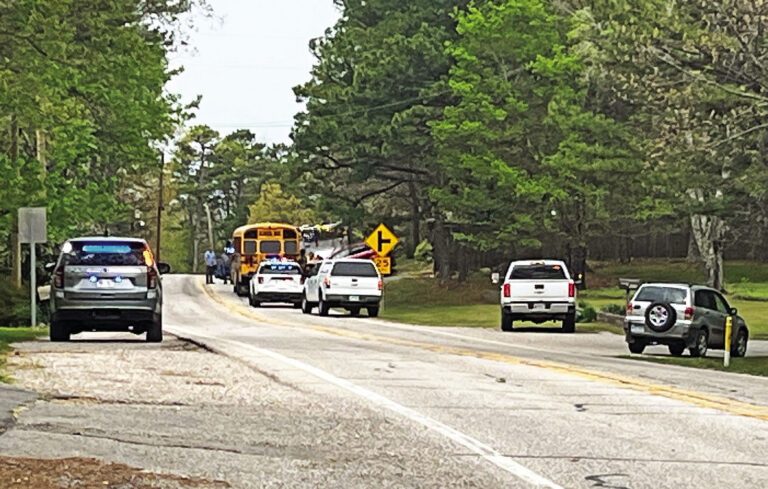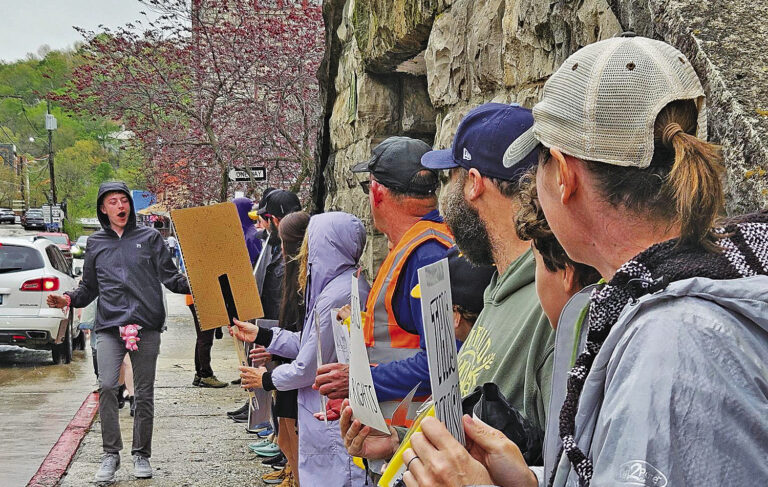The Eureka Springs City Advertising and Promotion Commission is projected to have a deficit of $295,000 in 2025, according to a budget expected to be approved at its next regular meeting scheduled for Wednesday, Jan. 22.
A hefty reserve balance, however, will help the situation, commissioners discussed at a workshop held Wedneday, Jan. 8 at The Auditorium.
“For tax remittance collection, we proposed a 3 percent increase,” said Ty Reed, CAPC finance director. “That would be collections of $2,100,000. What we did on all the expenses is we looked closely at each line and we feel like these are the numbers that need to be there. That being said, with that revenue and these expenses … it’s negative $295,000.”
Despite approving a proposed budget from Madden advertising agency during its December regular meeting — which included an overall increase of $299,000 — the amount spent on paid media was trimmed by approximately $122,000 in the revised budget proposal, Reed and CAPC director Mike Maloney told commissioners.
“We did reduce Madden so the line item for Madden is not the full amount that they requested,” Reed said. “We’ve cut everything we can think of. We added the $44,000 loan payment to the city in there. We’ve added $54,000 for parks … that includes $10,000 for trail maps and $44,000 for the Basin Park fountain that we discussed at the last meeting. We included $10,000 for Jamboreeka that was discussed last time and the — CAPC Finance Director Ty Reed
1 percent of collections bonus in payroll that was discussed last time.
“All those things being in there leaves us at negative $295,000. What we can do is go through this line by line and we can discuss what we can take out to make a balanced budget, or we can plan on using reserves to cover the net loss. Or we can do a mix of both.”
Reed and Maloney confirmed to the commission that the CAPC has approximately $2 million in reserves available.
“We have never really dedicated any of those funds to any particular thing,” Maloney said. “The word that came up today in a great conversation with the city was capital infusion, which was new to me. Capital infustion basically says that you take money from reserve to cover the difference, but on the basis that you realize that you’re going to put it back in some sort of way …” Commissioner Robert Schmid, who has often voiced his opinion that the reserve amount doesn’t need to be so much, asked why the CAPC’s internet and telephone budget went from $7,644 in 2024 to $23,000 in 2025.
“We went from copper to fiber optic to go ahead and take a gigahertz up and a gigahertz down,” Maloney said. “Sometimes our upload speeds were higher than our download speeds, creating a real problem with our communications.”
The CAPC office also upgraded its telephone system, but improving the internet in The Auditorium was the main key, especially when hosting meetings and events that rely on Wi-Fi.
“The best-case example was recently trying to stream a movie during one of our festivals and it just kept buffering, buffering,” Maloney said. “… Really, that is an embarrassment as well as just disappointment to realize that we’re sitting on an opportunity to go ahead and have the quality product, but we couldn’t deliver it.”
Maloney and commissioners having quarterly or mid-year budget reviews to make any adjustments necessary as the year progresses was also discussed.
“We worked really hard on this trying to come up with a balanced budget,” Maloney said. “I mean, that was our goal going into it. We looked at every line item and our percentage increase of what we felt like was feasible, and I think at 3:15 this afternoon, [Reed] actually went back in and knocked it down another 2 percent to come back with a little lower income just because we don’t know what our income is, but we know kind of what our expenses are. And again, we have to be somewhat optimistic about suggesting that we think we’ve got a great marketing team that works with us. We think that we’ve got some opportunity to capitalize on things that frankly, are really phenomenal.”
Maloney mentioned that the CAPC had demonstration from a company that is a monitoring source for “all things connected to your phone and location tracking and credit cards.”
“They’ve been trying to sell us a service for a long time,” Maloney said.
The company offered to use an event as an example of what they could offer the CAPC and Maloney said he suggested the recent “Bash with a Splash” New Year’s Eve event.
“So, I got to see the results a little bit yesterday,” he said. “And 5.5 thousand people between 8 p.m. and 1 a.m. were in the downtown area of Eureka Springs, of which 4.5 thousand were there, dedicated mostly in that area around Basin Spring Park. That area mentioned was a polygon that went from the transit department up on Main Street all the way up to The Grotto and kind of back into the hillside. So, it’s a pretty good geographic area when you get right down to it.
“That’s a lot of people. What we don’t know is the economic impact exactly at this point, but what I was curious about was, number one, the numbers and where they came from and the numbers were exactly where we market, Kansas City, Dallas-Fort Worth, Houston, New Orleans, Memphis showed up, Nashville showed up, St. Louis, Wichita, Tulsa, Oklahoma City, Springfield, Northwest Arkansas, Little Rock, Pine Bluff, state of Arkansas. So, the numbers were so good for that particular event that I’ve got to feel like, yeah, we can do this again. We know we can reach an audience if we’ve got the right thing to reach them with.”
MARKETING REQUESTS PROCEDURES The commission also discussed at the workshop procedures on granting marketing requests aimed at making sure there are equitable methods in place.
“The purpose of this is to make sure that we are looking at all event requests objectively across the board and that we have a record of how we’re measuring them in case of audit or anything legal,” commissioner Heather Wilson said. “We’re covering ourselves. I also wanted to explore that rubric we want to implement as a best practice and a policy …” Maloney explained that the current form used is a scoring sheet based on certain criteria. Events can be granted up to $5,000.
“We have not necessarily at fault but been very generous with funds,” he said. “And I think sometimes we probably have given $5,000 and really never recoup anywhere near that amount of money in terms of those income tax receipts. On the same token, as a community benefactor, we sometimes have to weigh that and determine what’s good for the community as a whole. So, sometimes you go back and take a look at the first part of this particular scoring sheet and say, ‘well, it was a great public service event. No, it didn’t bring in a lot of money, but it was great for goodwill.’ So, there’s two ways of looking at it.”
Ideas for revisions to the application form included indicating how many years the event has been going on and requiring an event organizer to reach out to public agencies such as police and fire to inform them of an upcoming event for awareness.


